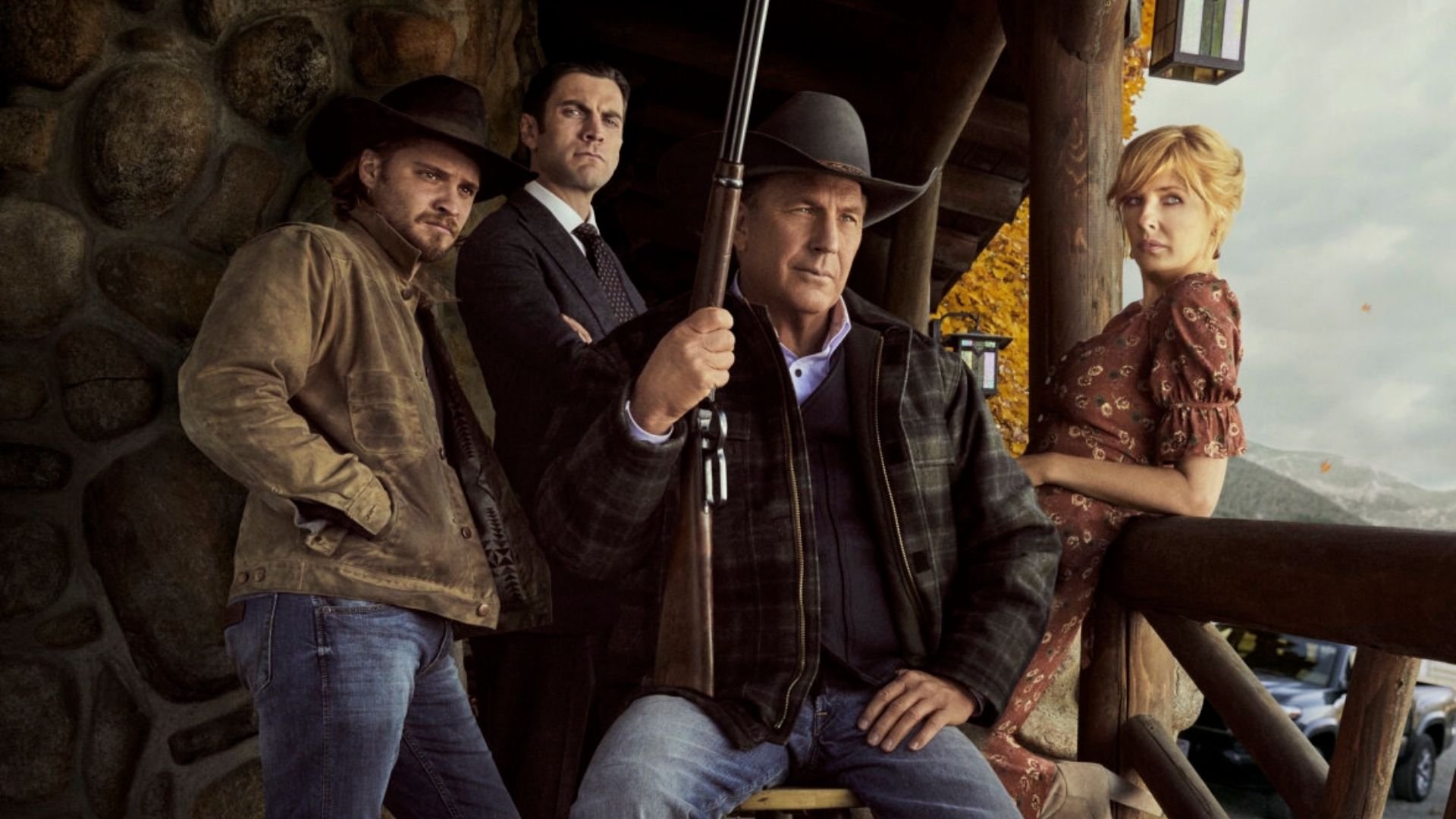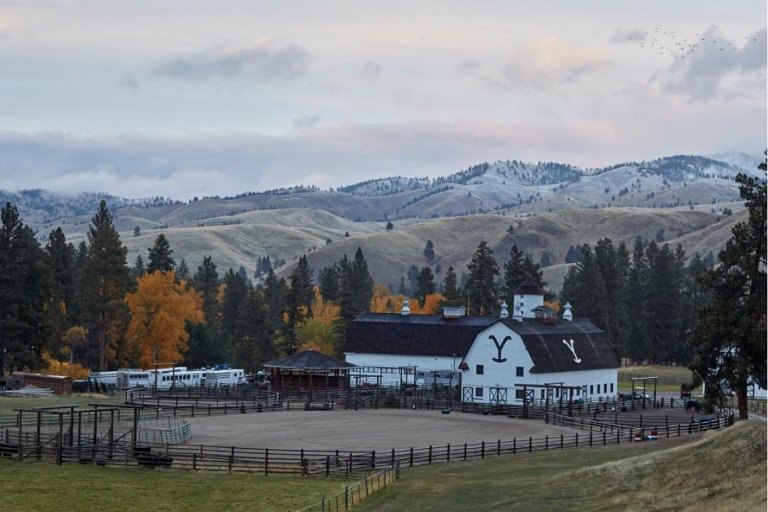By Karen Keene
Photo courtesy of Yellowstone
Land preservation is making prime time TV in arguably the most popular series on cable – Yellowstone. The Paramount Network drama centers around the Dutton family, owners of the largest contiguous ranch in the United States – the fictional Yellowstone Dutton Ranch in Montana, commonly called “the Yellowstone.” Kevin Costner portrays John Dutton III, the fifth-generation patriarch who operates the Yellowstone, and he and his family will stop at nothing to protect their land from continual disputes with developers and neighboring Broken Rock Indian Reservation and Yellowstone National Park. The latest and seemingly sure-fire tactic is for the Duttons to place their land in a conservation easement with a land trust.
Doing so protects the land forever from development and blocks Market Equities from building an airport on the Yellowstone as part of its multi-year, collaborative venture to develop a city and ski resort. The Duttons’ move to conserve their land with The Montana Land Trust is unexpected since it’s a completely legal and ethical way to protect their land. Throughout the series, the family and its allies have engaged in everything from violence to murder and blackmail to sophisticated deals to maintain control of the ranch. In the beginning of season five, John Dutton even becomes the Governor of Montana, although an extremely unconventional one.
Photo courtesy of Yellowstone
A conservation easement is a legal agreement that permanently limits uses of the land to protect specific conservation values and to prohibit certain activities that would harm those values. Air or water quality, plant or wildlife biodiversity, sensitive ecosystems, and even landscape or watershed views are among environmental traits applicable for preservation. The easement is essentially a deed restriction where the property owner relinquishes specific rights – in most cases, the right to subdivide or develop – while retaining the remainder. Easements can be donated, and land owners are compensated via a tax deduction.
In the Duttons’ case, they protect their way of life and ranch through the easement, and keep their property whole, as John intends. The family can continue to live there, and the land can be sold or passed on to heirs. Of course, restricting land’s development potential lowers its market value, but this reduction can significantly reduce income, estate, and inheritance taxes, which can make a critical difference in an heir’s ability to inherit the land intact. All future owners of the property are bound by the terms of the easement. It’s unclear whether the sixth-generation Dutton children: Kayce (Luke Grimes) and his family will ever settle on the ranch, if Beth (Kelly Reilly) and husband Rip Wheeler (Cole Hauser) will remain there, or if adopted Jamie (Wes Bentley) will ever be welcomed back.
With the underlying premise of the show being the Duttons’ ongoing fight to protect their expansive acreage, fans should expect some twists and turns still! In the Yellowstone spin-off prequel, 1883, it was revealed that James Dutton (Tim McGraw), the first owner, had promised to release ownership of the ranch back to its original stewards after seven generations. Native American Spotted Eagle (Graham Greene) allows Dutton and his family to settle on their land with the caveat that, “in seven generations my people will rise up and take it from you,” to which Dutton replies, “you can have it.”
Tate (Brecken Merrill), Kayce and Monica Dutton’s (Kelsey Asbille) son, is the only member of the Duttons’ seventh generation currently in the series. We will have to stay tuned to see where the show takes us.
Photo courtesy of Yellowstone
The Yellowstone, located in Park County, Montana’s Paradise Valley, east of Bozeman and west of Livingston, is touted as the largest ranch in Montana throughout the series, and in one instance, its acreage is compared to the size of Rhode Island. By best estimates, its area is somewhere between 620,000 and 825,000 acres. Open space of that magnitude is hard to come by nowadays, making it a remarkable acquisition for any land trust.
Being adjacent to Yellowstone National Park further increases its importance. In general, the highest priority land to preserve is property that is contiguous to preserved land (such as a national park), provides a natural bridge between preserved properties (for wildlife), or farmland for obvious reasons. One large, preserved area is better than the same area of several smaller, unconnected preserves because there is more core habitat. Similarly, properties such as the Yellowstone that include or abut important natural features like streams rate high for land preservation.
In real life, the Yellowstone depicted in the show is the Chief Joseph Ranch in Darby, Montana – a 2,500-acre working cattle ranch with cabins for rent as a vacation destination. Filming for the show began in Utah and Montana and is now done exclusively in Big Sky Country. Yellowstone creator Taylor Sheridan is a real-life cowboy who owns two ranches in Texas and most of the horses seen in the show.
Taylor Sheridan. Photo courtesy of Yellowstone
In a 2018 Los Angeles Times article, Sheridan shared his inspiration for the series came from his experiences as a rancher and changes he has witnessed in western states like Montana and Wyoming, where he lives.
“These issues of land development, resource mismanagement, oppression and extreme poverty, and inequity in government — they exist here [in Los Angeles],” he says. “But when it happens in a small area, in a rural area ... and because there’s fewer people, the consequences seem much more acute. When you start seeing Costcos in a landscape of farms and ranches, it’s much more dramatic than if they jam one in the San Fernando Valley.”
Here in the Garden State, we can relate to the splendor of Montana’s sweeping landscapes with our greenery and beaches, but we certainly differ in population, with New Jersey being the most densely populated state in the country. New Jerseyans know all too well the pressures of development and sprawling warehouses, as do most Americans these days.
Conservation easements are a reliable tool here, in Montana, and everywhere for safeguarding land and giving property owners flexibility. Some properties with significant conservation value qualify for state or federal funding to support the purchase of the conservation easement on developable land.
Monmouth Conservation Foundation is one of nearly 1,000 land trusts in the nation working collectively to preserve another 60 million acres across the country by the end of the decade through various vehicles, including conservation easements. Our charitable work ensures a permanent legacy of open space and natural habitat throughout the county as Monmouth’s only county-wide land trust. In some cases, we help a family like the Duttons protect their homestead and vision for their property, for future generations to benefit.





